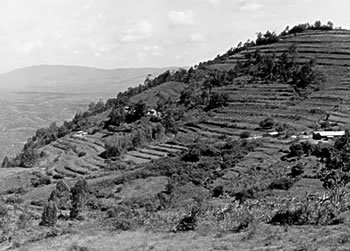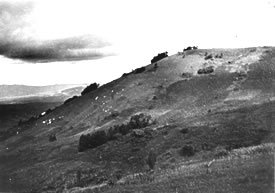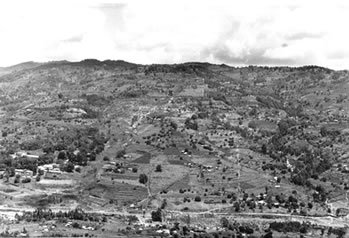
The Machakos Study
About the Machakos study
The Machakos study was carried out 1990-93 by scientists at the Overseas Development Institute, London, and the University of Nairobi. Its findings were published in a series of ODI Working Papers and then in the book, More People, Less Erosion: Environmental Recovery in Kenya, Mary Tiffen, Michael Mortimore and Francis Gichuki, John Wiley & Sons, 1994, with a special Kenyan edition by the ACTS Press, Nairobi.

An interdisciplinary team examined change in population and environment over a period of 60 years, from 1930 to 1990, and the accompanying social and economic changes as people responded to new opportunities and new constraints. It utilised a great variety of historical information and current investigations to come to the then surprising conclusion that very rapid population growth had been much surpassed by increases in resource productivity and per capita incomes. New investments of work and capital, combined with new technologies, had transformed and conserved the landscape. Many of these changes had required extra population, to provide labour, markets and means, as well as a relatively favourable government policy which had provided security of tenure, new transport and other infrastructure, and encouraged the spread of education. New technologies and farming systems had been adopted, responding to better contacts with markets and more sources of information.
Left: In 1991 the increase in the number of banana and other trees visible give a quick measure of improved productivity on the carefully terraced land, though its vulnerability to erosion without terraces is also visible in the foreground. Photo: Michael Mortimore.
 The study was copiously illustrated with photographs taken in the 1930s, the 1950s and 60s, and 1990, which showed the striking changes in landscapes as eroded slopes became terraced and planted with coffee, fruit and timber-producing trees, and gullies were healed. Oral history was utilised to illustrate people's consciousness of change in their institutions and technologies.
The study was copiously illustrated with photographs taken in the 1930s, the 1950s and 60s, and 1990, which showed the striking changes in landscapes as eroded slopes became terraced and planted with coffee, fruit and timber-producing trees, and gullies were healed. Oral history was utilised to illustrate people's consciousness of change in their institutions and technologies.
The study has had a lasting influence, being frequently cited, and used as teaching material. It has also led to other research studies designed to test and challenge it, or to extend its findings to new areas. It was funded by the World Bank, the UK's Overseas Development Administration (now DFID) and the Rockefeller Foundation. It cannot be obtained from Drylands Research, but is still available from the publishers or from the Overseas Development Institute, London.

Above: The same area depicted in photograph right in 1991 is well terraced, well planted with trees, and dotted with improved houses. Roads and tracks have been developed, and the school on the left expanded. Photo: Michael Mortimore.

Drylands Research, Somerset, United Kingdom